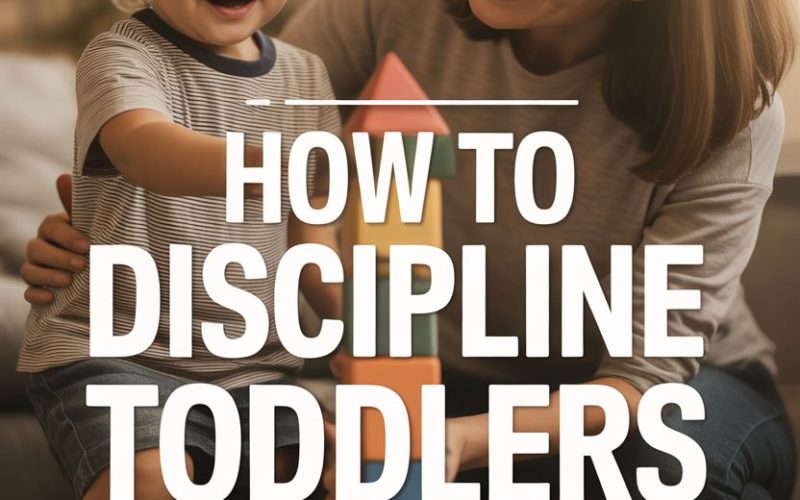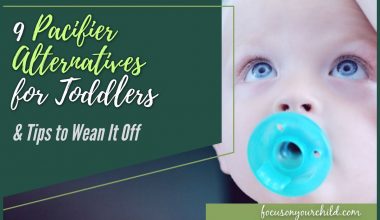If you’ve ever tried reasoning with a toddler mid-tantrum in the frozen food aisle, you know “discipline” can start feeling like a cosmic joke. Yet here you are, looking for strategies that keep your little one’s spirit intact—and your sanity, too.
There’s good news: you can absolutely set limits and foster respect without resorting to threats, bribes, shame, or anything that leaves your child quaking in their tiny trainers. Ready for a kinder, firmer approach? Let’s get into it.
Why Traditional Discipline Often Misses the Mark
Classic discipline—the old “time-out chair” or “because I said so” routine—tends to focus on suppressing the behaviour right now, rather than teaching skills for next time.
It can leave toddlers feeling misunderstood, frightened, or even a bit unloved just when they’re most in need of connection.
Leading paediatricians, such as Dr. Laura Markham, have long emphasised that children learn best when they feel safe and connected.
When discipline is all about fear or humiliation, it may “work” temporarily (cue the silence after you growl), but it doesn’t foster self-control or empathy.
In fact, research shows that shame-based tactics can increase anxiety, aggression, and defiance.
What Does ‘Positive Discipline’ Really Mean?
No, it’s not just letting your child run wild with a face full of chocolate buttons. Positive discipline is about teaching, not punishing.
It means setting clear boundaries, following through with consequences that make sense, and nurturing your child’s developing brain without crushing their spirit.
This doesn’t mean letting everything slide or being a pushover. If you’ve ever seen a toddler attempt to “negotiate” bedtime, you know they need boundaries like the rest of us need caffeine.
Connection Before Correction
Brains don’t absorb life lessons well when emotions are running high. Before correcting the behaviour, try validating your little one’s feelings.
Get down on their level, meet their eyes, and acknowledge: “You’re really upset because you wanted the blue cup and not the green one.”
This isn’t surrender—it’s emotional coaching. When children feel heard, they’re far more likely to cooperate.
Clinical psychologist Dr. Becky Kennedy calls this “connection before correction,” and it’s one of the fastest ways to diffuse power struggles, as seen in her expert-backed approach.
Consistency Wins (But Flexibility Helps, Too)
Toddlers might be tiny, but their sense of fairness rivals any union rep. If the rule was “no biscuits before dinner” yesterday, but today you’re just too tired to care, you’re inviting a world of confusion (and fresh lobbying efforts).
Consistency doesn’t mean rigidity. Life is unpredictable, and sometimes you will bend (Grandma’s birthday cake before lunch, anyone?). Just aim for patterns that make sense most of the time.
When you need to be flexible, name it: “Usually, we don’t eat cake before lunch, but today’s a special occasion.”
Natural and Logical Consequences
Forget arbitrary punishments. Logical consequences are related directly to the behaviour. If they dump their juice on the floor, they help clean it up. If they throw a toy, that toy goes on the shelf for a while.
Natural consequences don’t require your intervention—the world handles it. Refusing a coat means feeling cold outside (for a minute), so long as it’s safe.
These approaches teach cause and effect better than anything you could say.
Set Clear Limits—Minus the Threats
“Stop running or you’ll go to your room!” usually translates to “I’m not sure how to help you stop running.” Try stating the limit plainly: “Feet stay on the floor inside. If it’s hard to walk, we can take a break together.”
This keeps you in the role of guide, not adversary. Limits are reassuring when delivered with warmth and certainty (even if your insides are as calm as a startled chicken).
Offer Choices (But Not Too Many)
Toddlers are desperate for agency. Offering choices staves off power struggles and helps them feel capable.
“Would you like the red jumper or the yellow one?” works better than “What do you want to wear?”—unless you genuinely fancy seeing them in a tutu, gumboots, and a sunhat in January.
Two options usually suffice. Too many, and you’ll be waiting until next Tuesday for a decision.
Stay Calm—Even If You’re Faking It
Strong feelings are contagious. When you keep your cool (or pretend convincingly), your child is more likely to calm down, too.
If you’re about to lose it, give yourself permission for a few deep breaths before responding.
Kids will absolutely push your buttons—it’s their job. Your job is to show them that big feelings can be handled without losing your own marbles.
Repair After Rupture
Nobody is perfect. You will yell, lose patience, or mutter things you regret about Peppa Pig. What matters most is what comes next.
Repair means owning your missteps: “I was really upset and I yelled. That wasn’t okay. I’m sorry.” This models accountability, teaches resilience, and helps your child feel secure after a meltdown.
Use Redirection Like a Pro
Distraction isn’t just for toddlers; it’s a survival skill for parents, too.
Instead of dwelling on “don’t touch!” (which only seems to make the urge stronger), try, “Here, can you help me stack these blocks?” or “Let’s find your favourite book!”
Redirection isn’t avoidance—it’s a tactical retreat. You’re steering your toddler towards behaviour that works for both of you.
Praise the Process, Not Just the Outcome
“Good boy!” and “You’re so clever!” are lovely, but process praise has more staying power. Try, “You worked really hard to stack those blocks,” or “You kept trying, even when it was tricky.”
Research from Stanford shows that process praise fosters a growth mindset, making kids more resilient and motivated in the long run. Besides, it’s a lot less pressure than maintaining “good boy” status 24/7.
Don’t Be Afraid to Take Space
Sometimes the kindest thing you can do for everyone is to step away for a moment.
If your child is safe, remove yourself to regain composure. There’s no medal for powering through in a state of volcanic rage.
If your child sees you take space, you’re also teaching them it’s okay to pause when things get overwhelming—a skill that will serve them well beyond toddlerhood.
The Myth of ‘Naughty’
It’s tempting to label strong feelings or defiance as “naughty,” but toddler brains are still under construction.
Impulse control? Basically non-existent. Emotional regulation? A work in progress.
When you reframe meltdowns as cries for help, rather than schemes for world domination, compassion flows a bit more easily (and your blood pressure thanks you).
Gentle Does Not Equal Weak
Some worry that discipline without shame or fear is too soft. Yet, “gentle” doesn’t mean permissive. It’s about being firm on the limit and kind in the delivery.
“Gentle parenting” is rooted in brain science and attachment theory, and it’s been shown to reduce aggression and foster cooperation, according to a Harvard University study.
When It’s Time to Call in Backup
If you’re dealing with persistent behaviour that feels unsafe, unmanageable, or is weighing on your family, reaching out to a paediatrician, child psychologist, or a parenting coach can be a relief.
No shame in getting support—think of it as reinforcements, not surrender.
A Kinder Way Leaves Room for Joy
Try not to measure your success by spotless behaviour or an Instagram-worthy living room. The goal isn’t perfection—it’s connection, growth, and helping your little one learn to thrive in a world full of rules, emotions, and other people.
Gentle, shame-free discipline isn’t always the quickest path (and it won’t stop your toddler from hurling peas across the dinner table occasionally), but it’s a much kinder ride for everyone.
And at the end of the day, that’s what those little hearts—and yours—really need.





